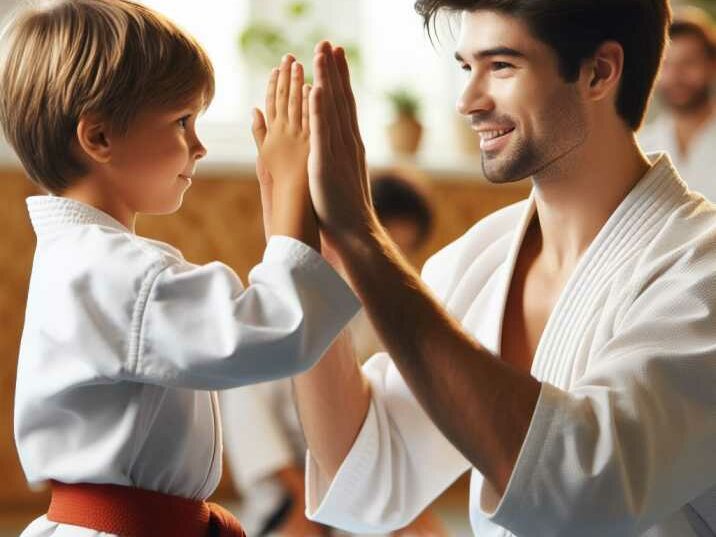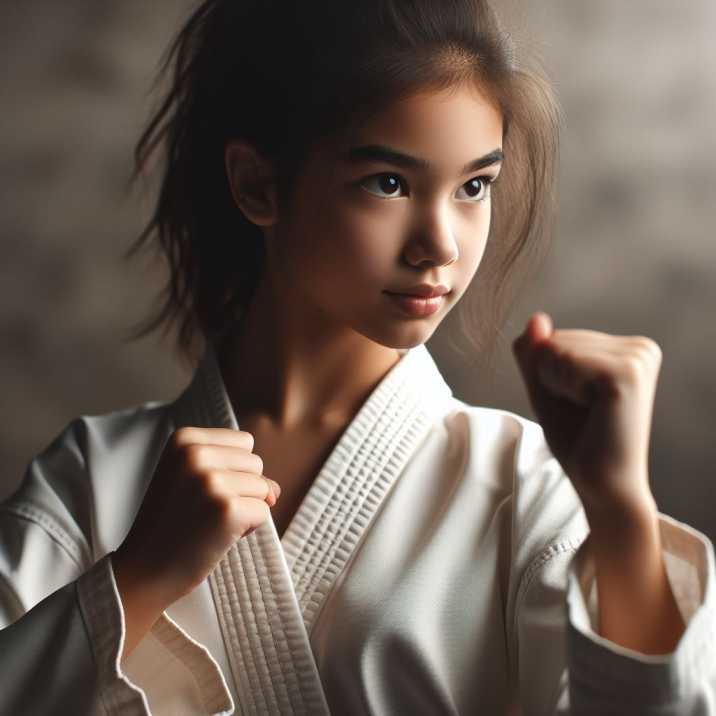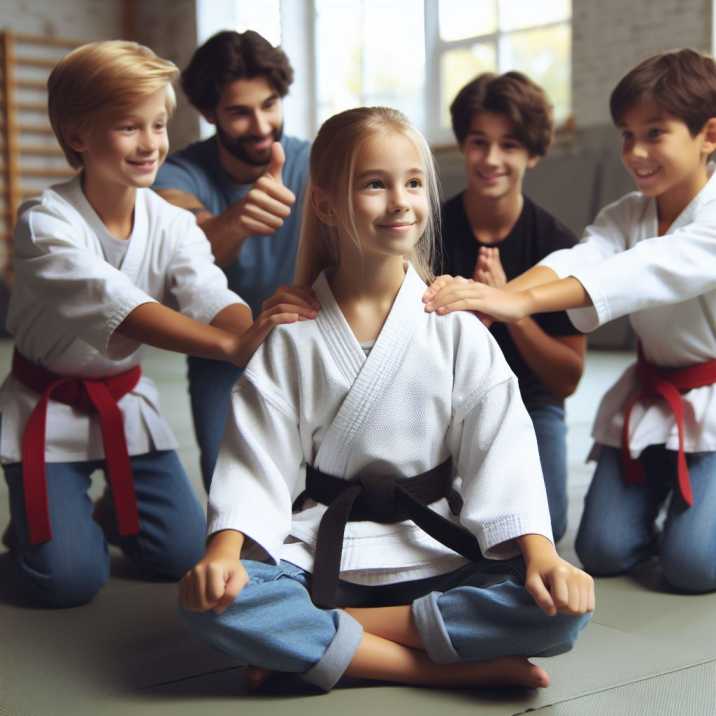Balancing Challenges for Different Age Groups in Kids Martial Arts
Table of Contents
Introduction
Kids Martial Arts is a dynamic and rewarding activity that not only promotes physical fitness but also instills valuable life skills. However, one size does not fit all when it comes to teaching martial arts to children. In this comprehensive guide, we’ll delve into the nuances of balancing challenges for different age groups in Kids Martial Arts, ensuring a positive and enriching experience for young practitioners.
Understanding Developmental Stages
The Early Years: Ages 4-6
In the initial stage, young children are like sponges, absorbing information and building motor skills rapidly. At this age, it’s crucial to focus on fundamental movements, basic coordination, and instilling a sense of discipline through playful activities. Incorporating games into the training sessions not only keeps them engaged but also lays the foundation for future learning.

Elementary Warriors: Ages 7-10
As children progress into elementary school, their attention span increases, allowing for more structured training sessions. Emphasizing teamwork, respect, and perseverance becomes paramount. At this stage, instructors should introduce basic martial arts techniques, gradually increasing the complexity to match their evolving cognitive abilities.
Tweens and Teens: Ages 11-15
Entering adolescence, youngsters start developing a deeper understanding of martial arts principles. Instructors should focus on refining techniques, introducing sparring, and fostering leadership skills. The challenge lies in keeping them motivated, addressing their evolving social dynamics, and ensuring a positive peer environment within the martial arts community.
Tailoring Instruction for Different Age Groups
Individualized Attention for the Little Ones
Young children thrive on positive reinforcement and individual attention. Instructors should use simple language, offer clear demonstrations, and provide plenty of encouragement. The class structure should incorporate short, engaging activities to maintain their interest, and ample breaks to keep them energized.
Structured Learning for Elementary Warriors
For the 7-10 age group, structured lessons that balance technique and fun are key. Introduce basic forms and patterns, encouraging them to set achievable goals. Implementing a reward system can be effective in motivating them to persevere through challenges, fostering a sense of accomplishment.
Fostering Independence in Tweens and Teens
As children transition into adolescence, it’s crucial to give them more responsibility and autonomy in their training. This can involve setting personal goals, participating in leadership roles within the class, and engaging in collaborative activities. Instructors should also address the emotional challenges that may arise during this age, emphasizing the mental aspect of martial arts.

The Role of Positive Reinforcement
Encouraging Progress at Every Level
Regardless of age, positive reinforcement is a powerful tool in Kids Martial Arts. Celebrating small victories, acknowledging effort, and providing constructive feedback create a supportive learning environment. Instructors should tailor their praise to the individual needs of each age group, recognizing achievements both inside and outside the dojo.
Incorporating Fun and Games
Playful Learning for the Young Ones
For the youngest martial artists, incorporating games into training not only makes it enjoyable but also aids in skill development. Games that involve basic martial arts movements, such as kicks and punches, can be seamlessly integrated into the curriculum. This not only keeps them entertained but also helps them grasp fundamental techniques in a playful manner.
Challenges as Learning Tools for Elementary Warriors
As children grow older, introducing challenges and friendly competitions becomes more effective. These can include obstacle courses, timed drills, and team activities. The element of challenge not only enhances their physical abilities but also nurtures a sense of healthy competition and camaraderie.
The Importance of a Supportive Community
Building a Martial Arts Family
Creating a sense of community is vital in Kids Martial Arts. Instructors should foster an inclusive atmosphere where students feel a sense of belonging. This is particularly crucial during the tween and teen years when peer relationships play a significant role in a child’s life. Organizing events, team-building exercises, and group discussions can contribute to a positive and supportive martial arts family.
The Role of Passive Voice in Instruction
While maintaining an instructional tone, the passive voice can be strategically employed to emphasize actions rather than individuals. For example, instead of saying, “You should perform the kick this way,” one could say, “The kick is performed by extending the leg in this manner.” This approach places the focus on the technique itself, contributing to a clearer understanding for young learners.
Addressing Emotional and Behavioral Challenges
Recognizing and Supporting Emotional Growth
Children of different age groups may experience emotional challenges during their martial arts journey. Instructors should be attuned to these nuances, offering a supportive environment for expression. Encouraging open communication and teaching coping mechanisms can contribute to emotional resilience.
Balancing Screen Time and Physical Activity
Navigating the Digital Age
In the 21st century, balancing screen time with physical activity is a universal challenge for parents and instructors alike. Incorporating technology into martial arts lessons, such as virtual tutorials or interactive apps, can be a creative way to engage tech-savvy youngsters while maintaining the physicality of the practice.

Conclusion
In the world of Kids Martial Arts, understanding the diverse needs of different age groups is essential for effective instruction. By tailoring training approaches, incorporating positive reinforcement, fostering a supportive community, and addressing emotional challenges, instructors can create a holistic learning environment. Balancing challenges for different age groups not only enhances physical skills but also contributes to the overall development and confidence of young martial artists. Through thoughtful and age-appropriate instruction, Kids Martial Arts can be a transformative and enriching experience for children of all ages.
Frequently asked questions (FAQs) :
- Q: At what age can my child start practicing martial arts? A: Children can start martial arts as early as four years old. Many programs offer age-appropriate classes, ensuring a positive and developmental experience for young practitioners.
- Q: How do instructors adapt training for different age groups? A: Instructors tailor their approach by adjusting lesson structures, incorporating age-appropriate games and challenges, and recognizing the cognitive and physical abilities unique to each age group.
- Q: Is it safe for young children to engage in martial arts activities? A: Yes, when taught by qualified instructors, martial arts can be safe for children. Instructors prioritize safety, use protective equipment, and design activities that match the developmental stage of each child.
- Q: What role does positive reinforcement play in Kids Martial Arts? A: Positive reinforcement is crucial in motivating and building confidence in young martial artists. Instructors use praise and encouragement to celebrate achievements and efforts, fostering a positive learning environment.
- Q: How do martial arts classes address the emotional needs of tweens and teens? A: Martial arts classes for older children emphasize emotional development by incorporating discussions, providing mentorship, and creating a supportive community where students can express themselves.
- Q: Can Kids Martial Arts help with my child’s focus and discipline? A: Yes, Kids Martial Arts is known for improving focus, discipline, and self-control. Through structured training and positive reinforcement, children learn to channel their energy and concentrate on tasks.
- Q: How can parents support their child’s martial arts journey at home? A: Parents can support their child by reinforcing lessons learned in class, encouraging consistent practice, and engaging in open communication with both the child and the instructor.
- Q: What are the benefits of incorporating games into martial arts training for younger kids? A: Games enhance motor skills, make learning enjoyable, and provide a platform for social interaction. They also help young children develop coordination and foundational martial arts movements in a fun and engaging way.
- Q: How do martial arts classes address the challenges of screen time in today’s digital age? A: Instructors may incorporate technology into lessons, balance screen time with physical activity, and promote awareness of a healthy lifestyle, encouraging a well-rounded approach to technology use.
- Q: Are there opportunities for competition in Kids Martial Arts for older children? A: Yes, as children progress, many programs offer opportunities for friendly competitions, sparring, and even participation in martial arts tournaments. These experiences contribute to personal growth and resilience.


